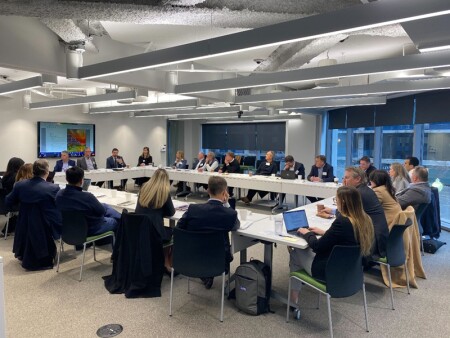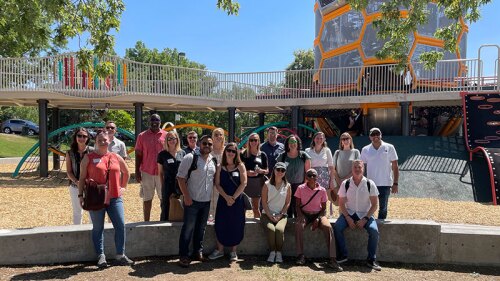With rapidly changing policies and technologies across the built environment, leaders in the industry are looking for guidance on how to include embodied carbon in their journey to net zero. It’s not a question of moving forward, noted Diane Hoskins, CEO of Gensler, but a concern that “who you partner with matters more than ever.” As part of the organization’s global net zero mission priority, ULI brought together executives, like Hoskins, in the construction and developer fields to collaborate on the challenges and opportunities of reducing carbon emissions in development. The first ULI Executive Convening on Embodied Carbon—held on January 17th at ULI’s headquarters in Washington, D.C., and hosted by ULI’s Decarbonization Program—launched the first of many convenings to build stronger partnerships across the industry enabling accelerated advancement on sustainability improvements and beyond.
Buildings account for an estimated 39 percent of global carbon emissions annually: 28 percent from building operations and 11 percent from building materials and construction. Operational carbon includes the greenhouse gas emissions from building energy consumption. Embodied carbon refers to the greenhouse gas emissions resulting from the manufacturing, transportation, installation, maintenance, and disposal of building materials. While operational carbon has the potential to decrease annually over time with efficiency updates, there is no chance to decrease embodied carbon after the building is constructed.
Over the lifetime of a building, embodied carbon from materials and construction can account for half of a building’s carbon emissions. This leads to the urgent need to address embodied carbon now, as global building floor area is expected to double by 2060. Plus, as global momentum builds for climate action, federal state and local governments have increasingly introduced building-sector requirements covering everything from carbon emissions and energy use to green building certifications and climate resilience. In 2022, an unprecedented number of policies were introduced and passed addressing embodied carbon reductions in the building and infrastructure sector.
ULI recognized the need to move fast to get ahead of the push to reduce embodied carbon and brought together executives from the developer and construction industry such as Owen Thomas, CEO of Boston Properties, Kim Roy, CEO of HITT Contracting, and Diane Hoskins co-CEO of Gensler for the Executive Convening. While participants varied in their progress on embodied carbon reduction policies and experience, all agreed with Owen Thomas that addressing the urgent need to reduce embodied carbon is “not [just] the right thing to do, it’s the smart thing to do.”
As part of the presentation, John Cowles and Jessie Buckmaster from Hathaway Dinwiddie, a West Coast construction firm, detailed how they used the Embodied Carbon in Construction Calculator (EC3) to make informed low carbon material decisions for their Los Angeles project On Vine.
David Shirey, senior vice president of Brookfield Properties, walked through the firm’s embodied carbon strategy as a fully integrated developer, from design through development, and their plan to achieve net zero emissions by 2050.
After sharing examples of success, participants discussed concerns and challenges they have faced in addressing embodied carbon reductions. Common challenges included the regional nature of the concrete and steel supply chain coupled with difficulty implementing firm-side ESG strategies over multiple regions Participants mentioned the need to inform and educate stakeholders in the industry to increase buy-in, avoid greenwashing, and allow informed goal creation and decision making.
Several key areas of focus were identified in moving this important work forward, including:
- making the business case for reducing carbon,
- education and communication,
- understanding policies, regulations and standards,
- technology advancements, and
- benchmarking carbon in order to meaningfully track reductions.
ULI plans to build on its existing embodied carbon work through subsequent convenings, reports, and other resources in line with these focus areas. Join us for a Webinar further recapping this event’s discussion on how the industry can form partnerships to reduce embodied carbon on Wednesday April 5th, 2023 at 1 pm ET, registration and more information can be found here.







